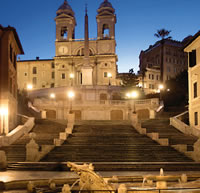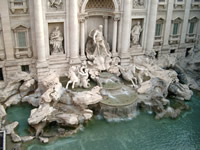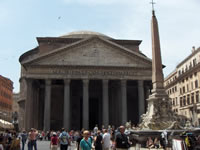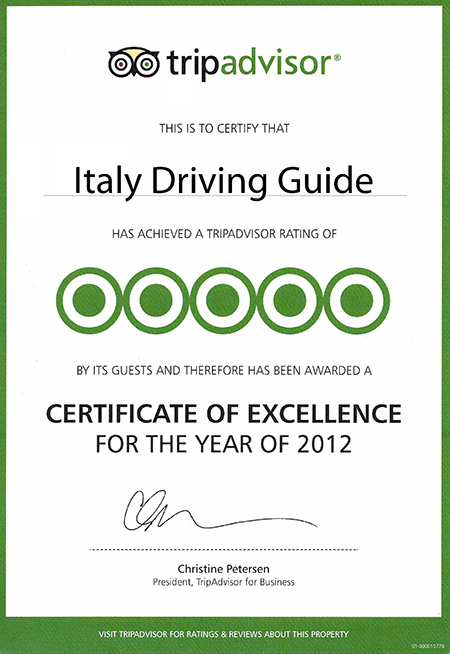

|
Venice Square with "The Wedding Cake", Roman Forum, Colosseum, Circus Maximus, Capitol Hill, Palatine Hill and the Baths of Caracalla.
Back to the center of Rome, stop for a visit inside the Pantheon, Spanish Steps and Trevi Fountain.
We will stop for a typical Italian Lunch (not incld) and shopping.
Will Continue the Tour to the Vatican City, the smallest state in the world, visiting: the Vatican Museum, Sistine Chapel and St. Peter's Basilica.
For the Vatican we can provide a licensed multilingual speaking guide for a private 2 hours tour at the additional cost of Euro 150 plus Euro 14 each for the entrance ticket.
In the afternoon you will be driven back to your hotel.
ITINERARY CHANGES CAN BE REQUESTED TO YOUR DRIVER GUIDE. |


|
From founding to Empire
Rome's early history is shrouded in legend. According to Roman tradition, the city was founded by the twins ROMULUS & REMUS on April 21, 753 B.C.
Archaeological evidence supports the view that Rome grew from pastoral settlements on the Palatine Hill built in the area of the future Roman Forum.
While some archaeologists argue that Rome was indeed founded in the middle of the 8th century BC, the date is subject tocontroversy.
The original settlement developed into the capital of the Roman Kingdom (ruled by a succession of seven kings, according to tradition), and then the Roman Republic
(from 510 BC, governed by the Senate), and finally the Roman Empire (from 27 BC, ruled by an Emperor).
Rome has more than two and a half thousand years of history, it was, once, the largest city in the world and the centre of Western civilisation. Rome is still the heart of Christianity, being seat of the Roman Catholic Church.
One of the symbols of Rome is the Colosseum (70–80 AD), the largest amphitheatre ever built in the Roman Empire. Originally capable of seating 60,000 spectators, it was used for gladiatorial combat. The list of important monuments of ancient Rome includes the Roman Forum, the Domus Aurea, the Pantheon, Trajan's Column, Trajan's Market, the Catacombs, the Circus Maximus, the Baths of Caracalla, Castel Sant'Angelo, the Mausoleum of Augustus, the Ara Pacis, the Arch of Constantine, the Pyramid of Cestius, and the Bocca della Verità.
Rome was a major world centre of the Renaissance, second only to Florence, and was profoundly affected by the movement. The most impressive masterpiece of Renaissance architecture in Rome is the Piazza del Campidoglio by Michelangelo, along with the Palazzo Senatorio, seat of the city government. During this period, the great aristocratic families of Rome used to build opulent dwellings as the Palazzo del Quirinale (now seat of the President of the Italian Republic), the Palazzo Venezia, the Palazzo Farnese, the Palazzo Barberini, the Palazzo Chigi (now seat of the Italian Prime Minister), the Palazzo Spada, the Palazzo della Cancelleria, and the Villa Farnesina.
Rome is also famous for her huge and majestic squares (often adorned with obelisks), many of which were built in the 17th century. The principal squares are Piazza Navona, Piazza di Spagna, Campo de' Fiori, Piazza Venezia, Piazza Farnese and Piazza della Minerva. One of the most emblematic examples of Baroque art is the Fontana di Trevi by Nicola Salvi. Other notable 17th century baroque palaces are the Palazzo Madama, now the seat of the Italian Senate and the Palazzo Montecitorio, now the seat of the Chamber of Deputies of Italy.
Today, Rome is a modern, cosmopolitan city, and the third most-visited tourist destination in the European Union. Due to its influence in politics, media, the arts and culture, Rome has been described as a global city.
Rome is the capital city of Italy ,the largest and most populated with almost 4 million inhabitants. It is located in the central-western portion of the Italian peninsula, on the Tiber river.
As one of the few major European cities that escaped World War II relatively unscathed, central Rome remains essentially Renaissance and Baroque in character. The historic centre of Rome is listed by UNESCO as a World Heritage Site. |


![]()
![]()
![]()




